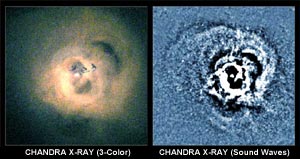This area deals with the fundamental laws and building blocks of nature and how they interact, the properties and the behavior of matter, and research into space and time and their structures.
innovations-report provides in-depth reports and articles on subjects such as astrophysics, laser technologies, nuclear, quantum, particle and solid-state physics, nanotechnologies, planetary research and findings (Mars, Venus) and developments related to the Hubble Telescope.

For over 60 years now, the University of Liege Astrophysics and Geophysics Institute (IAGL) has been concerned with the study of comets. Again today, four of its researchers have just made a major discovery for the understanding of these celestial objects : a lot of extra heavy nitrogen detected in two comets suggests the presence of great quantities of complex organic molecules in them. The results obtained by the Liege team will be published in the next number of the international magazine, Science

An astronomer from the Lawrence Livermore National Laboratory, in collaboration with an international team of researchers, have discovered that a neighboring galaxy — the Large Magellanic Cloud (LMC) — appears to have formed with an old stellar halo, similar to how our very own Milky Way formed.
The oldest and most metal-poor Milky Way stars form a spherical halo where they move about like atoms in a hot gas, which in turn prompts two major formation scenarios of our galaxy: extended hier

MIT scientists have cooled a sodium gas to the lowest temperature ever recorded – only half-a-billionth of a degree above absolute zero. The work, to be reported in the Sept. 12 issue of Science, bests the previous record by a factor of six, and is the first time that a gas was cooled below 1 nanokelvin (one-billionth of a degree).
“To go below one nanokelvin is a little like running a mile under four minutes for the first time,” said Nobel laureate Wolfgang Ketterle, co-leader of the team.

ESA’s Herschel spacecraft will collect infrared radiation from some of the coldest and most distant objects in the Universe. But why are observations of infrared light so special?
The Universe is full of radiation of all types but most of this does not reach us here on Earth because our atmosphere blocks out many wavelengths of radiation, but lets others through.
Fortunately for life on Earth, the atmosphere blocks out harmful, high-energy radiation like X-rays, gamma rays and

NASA’s Chandra X-ray Observatory detected sound waves, for the first time, from a super-massive black hole. The “note” is the deepest ever detected from an object in the universe. The tremendous amounts of energy carried by these sound waves may solve a longstanding problem in astrophysics.
The black hole resides in the Perseus cluster, located 250 million light years from Earth. In 2002, astronomers obtained a deep Chandra observation that shows ripples in the gas filling the cluster.

A common table commodity that people sprinkle on their food every day is the main ingredient in new measurements by scientists at the Sudbury Neutrino Observatory (SNO).
In a presentation on Sunday September 7th, at TAUP2003, a major scientific conference in Seattle, Washington, new measurements were reported that strongly confirm the original SNO results announced in 2001 and 2002 that solved the “Solar Neutrino Problem” and go much further in establishing the properties of neutrin